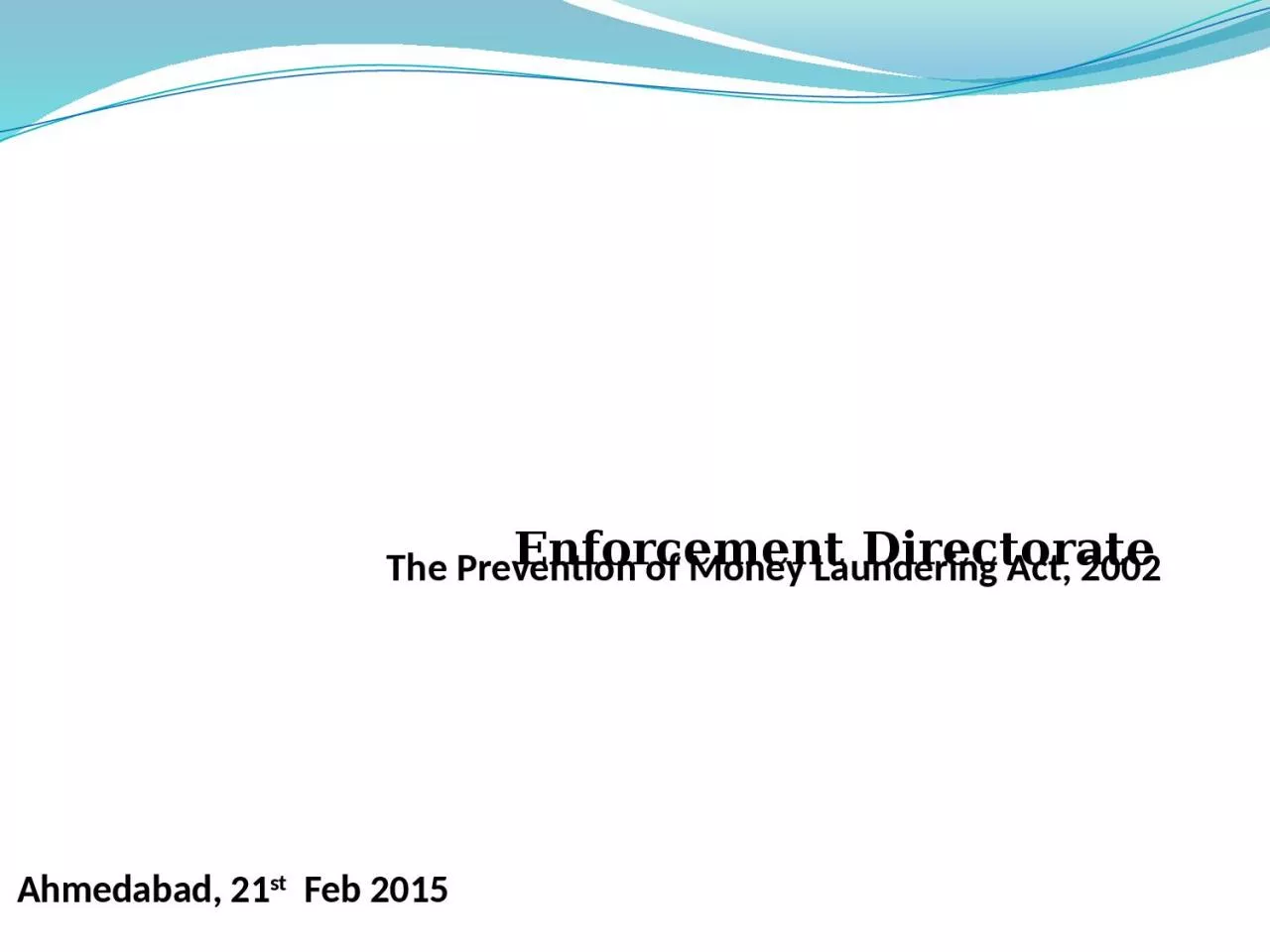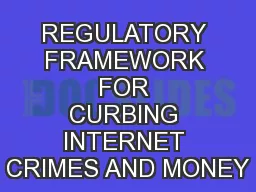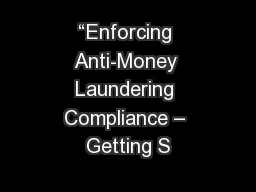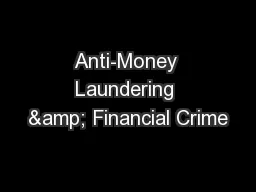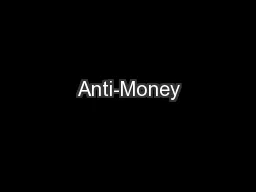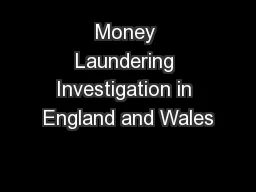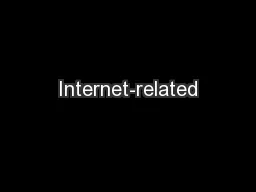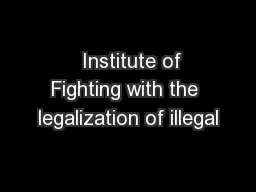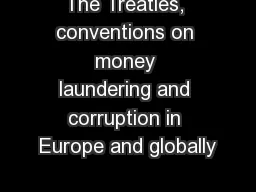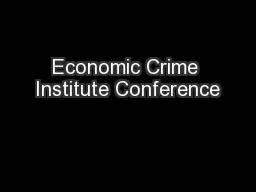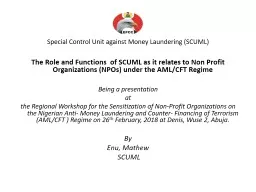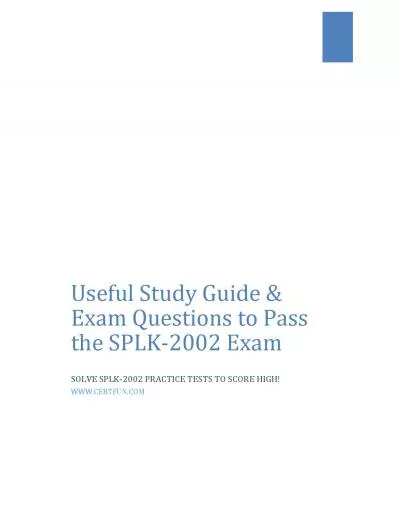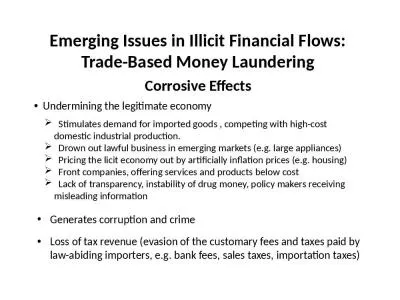PPT-The Prevention of Money Laundering Act, 2002
Author : cora | Published Date : 2022-06-18
Enforcement Directorate Ahmedabad 21 st Feb 2015 Money Laundering Process by which illegal funds and assets are converted into legitimate funds and assets The
Presentation Embed Code
Download Presentation
Download Presentation The PPT/PDF document "The Prevention of Money Laundering Act, ..." is the property of its rightful owner. Permission is granted to download and print the materials on this website for personal, non-commercial use only, and to display it on your personal computer provided you do not modify the materials and that you retain all copyright notices contained in the materials. By downloading content from our website, you accept the terms of this agreement.
The Prevention of Money Laundering Act, 2002: Transcript
Download Rules Of Document
"The Prevention of Money Laundering Act, 2002"The content belongs to its owner. You may download and print it for personal use, without modification, and keep all copyright notices. By downloading, you agree to these terms.
Related Documents

